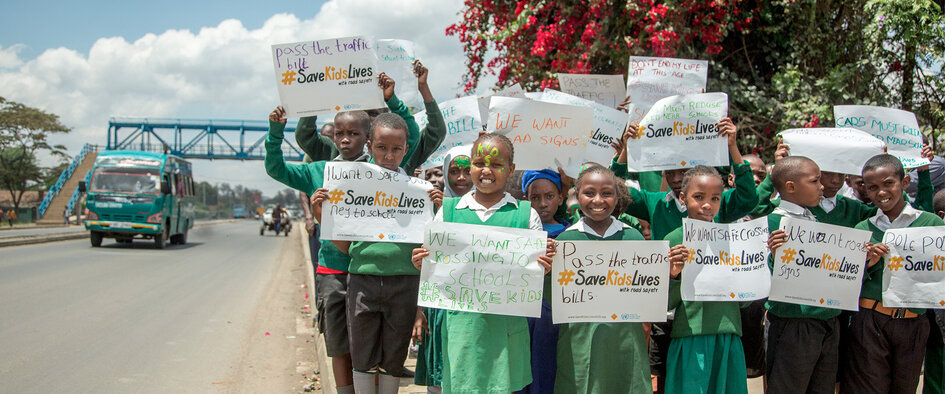The #SaveKidsLives campaign is well into its second phase, which encourages campaigners and supporters to gather action and commitments from decision makers to enact five proven measures for road safety. The ultimate aim is to #SaveKidsLives. We fully support this campaign and invite the youth network for road safety to take part and follow the campaign’s steps. The 2020 Action Agenda is the centerpiece of the campaign. Explore it with us.
#SaveKidsLives is an official campaign coordinated by the United Nations Road Safety Collaboration. It was launched 6 months before the Third United Nations Global Road Safety Week in May 2015. The campaign is co-led by children and calls for urgent action to halve road deaths and injuries by by 2020; the target established in the Global Goals, the Sustainable Development Agenda for the next 15 years (2030).
It does so by:
- highlighting the plight of children and the vulnerable on the roads;
- generating worldwide action to better ensure our safety on the roads, starting with children;
- calling for strong commitments to save lives on the roads to reach the Global Goals targets.
The campaign operates on the principles of the Decade of Action for Road Safety 2011-2020 and is managed by a broad coalition of members from the United Nations Road Safety Collaboration.

The Five Key Priorities: 2020 Action Agenda
Call on your leaders at all levels to make public how they will reach the Global Goals target to halve road deaths in the next five years.

1. A safe journey to school for every child including safe roads and speed management around every school.
Every child deserves a safe journey to school. For many children around the world, walking to school through busy highways, with no footpaths, low visibility and no school patrols is a daily occurrence. Our children, our most valuable assets are put at risk, more than 500 of them don’t make it to school and are killed on the road every single day, all across the world.
A safe journey to school promotes healthier lifestyles, safer roads where special measures are put in place to protect children and much more.

1. A safe journey to school for every child including safe roads and speed management around every school.
Every child deserves a safe journey to school. For many children around the world, walking to school through busy highways, with no footpaths, low visibility and no school patrols is a daily occurrence. Our children, our most valuable assets are put at risk, more than 500 of them don’t make it to school and are killed on the road every single day, all across the world.
A safe journey to school promotes healthier lifestyles, safer roads where special measures are put in place to protect children and much more.

3. Motorcycle helmets for all children where two-wheelers are the main family transport.
There are several reasons why helmets are important:
- In developing countries, motorbikes are the vast majority of the vehicles on the road and are involved in more crashes than any other type of vehicle;
- Wearing a helmet has been proven to decreases the likelihood of death by up to 39%; and decreases the risk and severity of injuries by about 72% in the event of a crash;
- Helmets can be produced in-country, creating jobs and supporting road safety programs;
- Helmets are tangible, their use easily enforced, and wearing rates easily tallied, given human and financial resources.
(Source: Liu B et al. Helmets for preventing injury in motorcycle riders. The Cochrane Database of Systematic Reviews, 2005)

4. Vehicles safe for children and action to promote child restraints.
Infants and children need a child restraint system that accommodates their size and weight, and can adapt to cope with the different stages of their development. Cars adapted for the safety of children can save many lives.
Simple steps such as action to ensure children have the appropriate seatbelts and child seats ensure that our children our safer in the car in the event of a collision.

5. Enforcement and action against drink-driving.
Drinking and driving is one of the main causes of road crashes worldwide. In high-income countries about 20% of fatally injured drivers have excess alcohol in their blood, while in some low- and middle-income countries these figures may be up to 69%. Effective drinking and driving programmes have the potential to save thousands of lives, and was identified by the World Report on Road Traffic Injury Prevention as a proven and effective measure to reduce death and injury on the road.


